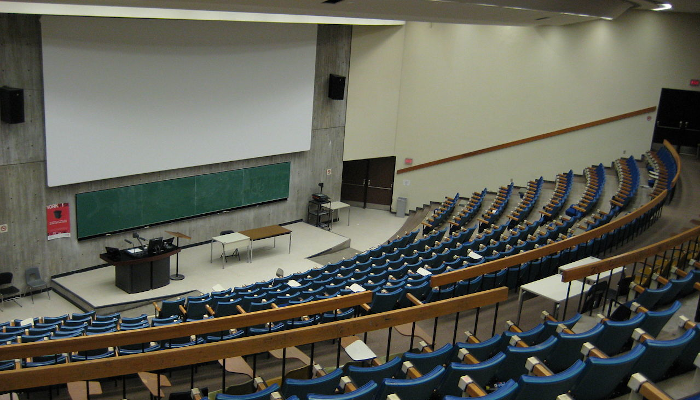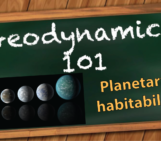
Starting to teach a course at a university can be an exciting but daunting experience. In today’s post Menno Fraters shares his experiences of starting to teach a class of 100+ students during the challenging time of the COVID-19 pandemic. He provides three quick tips for when you start teaching, that may be useful for teaching in academics.
During your time as a PhD student, you may have already been exposed to teaching as some form of a Teaching Assistant (TA). The responsibilities of a TA differ wildly between universities from simply helping answering student questions to having to lead a complete discussion session, or even lead a full course (respect for that!). As a PhD student, I mostly helped students with their assignments and/or coding.
Recently as a postdoc, I had the opportunity to teach a General Education (GE) class at UC Davis. General Education classes in the US are typically courses outside a student’s field of study to broaden their breadth of knowledge. The catch here was that the course was about a topic I was not very familiar with – – the Solar System. However, since it was a GE class, I was assured that I was able to teach at the required level. The previous lecturer had left slides and even recordings of his lectures, what could possibly go wrong? When I started to study the material, I found out how much I didn’t know about the Solar System or more positively, how much there is to learn! I was having great fantasies of me standing in a grand lecture hall in front of a large class, interacting with the students while teaching them the fundamentals of our solar system, the different missions exploring it, and everything we do and especially don’t know yet.

I did enjoy asking my students in the first lecture what kind of object this is. (Answer is in the next figure!) Figure by NASA.
As you, dear reader, might already have guessed, something happened to intervene: the COVID-19 pandemic! Within a few weeks I had to change the course into an online format. Luckily everyone at the University was really supportive and helpful. In those weeks, we tested out different tools for teaching and discussed a range of issues including grading for remote learning, whether certain lectures and/or discussion session should remain mandatory, and handling students with mental health issues.
Now that the quarter is almost at an end, I am glad that I had the chance to teach and given the opportunity, I hope that next time I can stand in front of a real classroom! In the spirit of sharing (#EGU2020), I would like to share some advice I received when I started teaching or discovered along the way through trial and error. Note that this is just from my personal experience (n=1), and I’d be happy to receive other (better?) advice if you have it in the comments below!
1. Set strict rules and communicate them clearly, over and over and over and …, so you can make exceptions.
This may seem contradictory, but I found this advice more helpful then I initially expected. As a lecturer of a large class, you will receive many questions and request from students. You will help yourself and your students by setting strict rules which can be communicated very clearly. You will also need to very clearly communicate to the students that if they have a problem, they should communicate this to you or one of the TA’s as soon as possible, such that a solution can be found. Both the rules and the fact that exceptions can be made should be communicated over and over again. This may start to feel silly, but keep in mind that this is not the only course the students are taking and they, like you, have busy lives and personal problems which may be intensified due to the COVID-19 pandemic.
2. Start engaging students in your class as early as possible, do not wait!
This may seem like a no-brainer, but I would say it is even more important while teaching remotely. I was lucky that I already had some experience with giving presentations through zoom, but these often felt like talking to a brick wall until questions came. I desperately wanted to prevent that from being my whole lecturing experience. One way of accomplishing more engagement in the first ~10 lectures was to include one or two polls about what I had just presented. This way I could easily assess whether they understood what I had just been saying in the previous few slides. After the first few lectures, I noticed that students were starting to use the chat a lot to ask questions during the lecture and I stopped having the feeling of talking to a brick wall!
3. The first weeks will take a lot of time. Don’t worry, that’s fine. Just plan for it.
I received this advice from many people, but it’s still hard to figure out where the hours in the day disperse into during the first few weeks. What I think it boils down to is that starting something new like teaching a class requires confidence building. This may mean different things for different people. In my case, I was teaching out of my area of expertise and worried about questions I would not be able to answer. And what about conspiracy theory questions (yes, this happened)? At the beginning of the course, I tried to come up with all possible questions I could come up about the material and then trying to answer them at the level of a GE student. This even led me to redesigning the slides so they would better fit to my story and hopefully avoid some of those questions. This took a huge amount of time. However, after a few weeks of lectures, I was better able to gauge the level of the students (tip #2 helped with this) and hence, could drastically reduce the preparation time without significantly lowering the quality of the lectures.
Bonus tip: Ask around
One of the best resources of information are the people around you. With teaching this is not any different. It turns out that many people are keen on helping out. Get advice from as many experienced educators as you can, and use it to create your own style of teaching!

It is a Moon! Saturn’s moon Pan. Figure by NASA/JPL/Space Science Institute.




